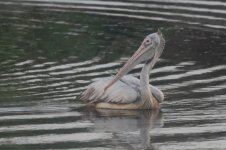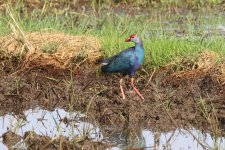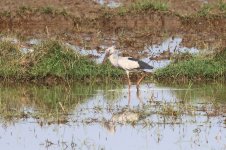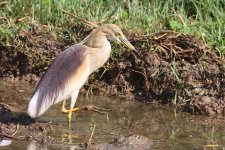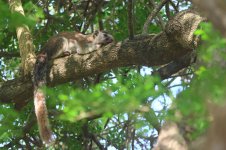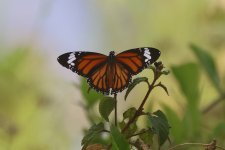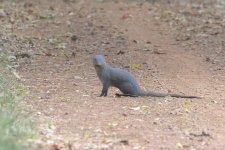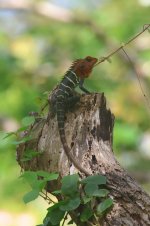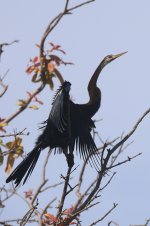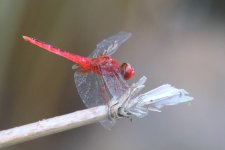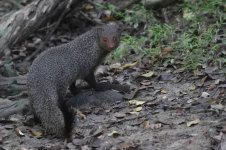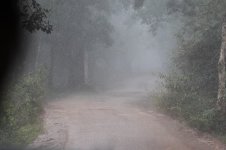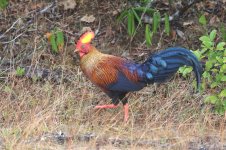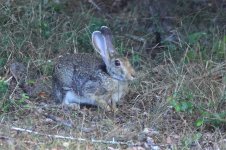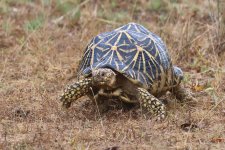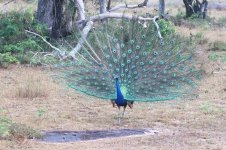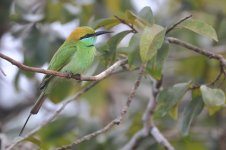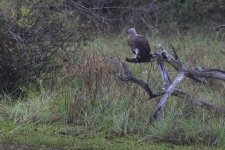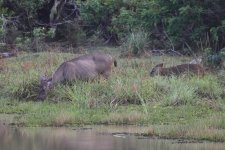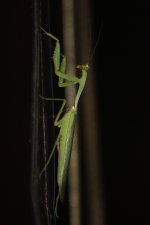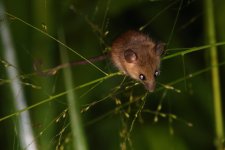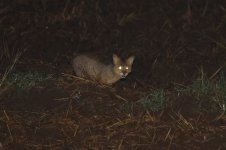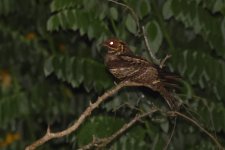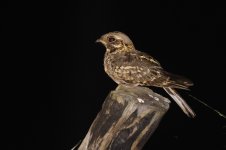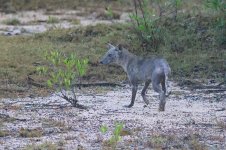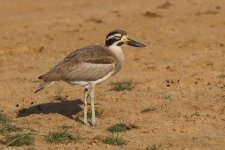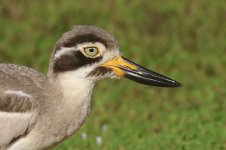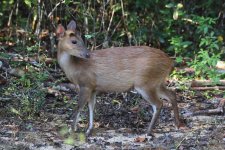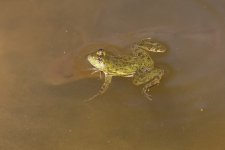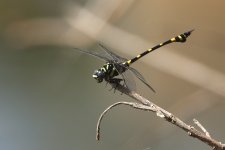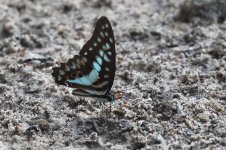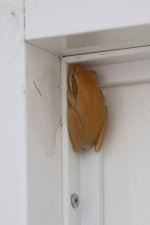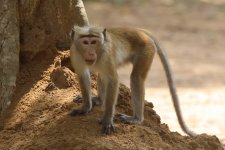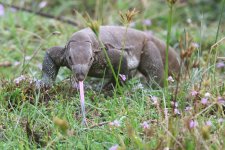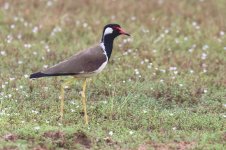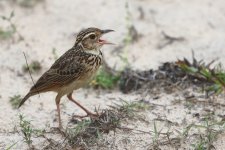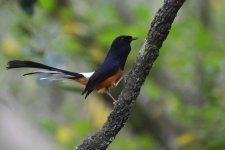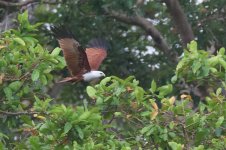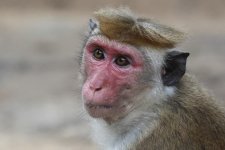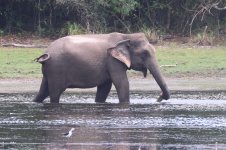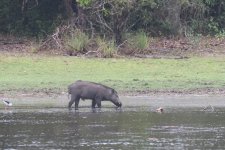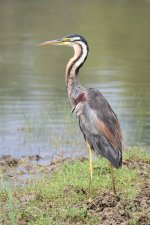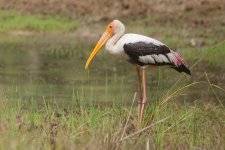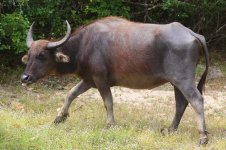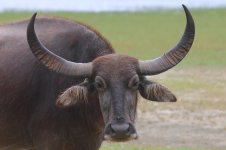Farnboro John
Well-known member
From Dusk Till Dawn: Spotlight on Sri Lanka’s Mammals
This report is entirely my own work using memory, notebook, photos and trip checklist to reconstruct what we saw when. I’ve added some of the anecdotal stuff. In both respects my memory may be at fault. Hopefully Steve or Roy will chip in occasionally and straighten out any misrecollections.
Cast:
John Dixon (me)
Stephen Babbs
Roy Hargreaves
John Pilgrim
Dulan Ranga Vidanapathirana (Guide)
Plan:
Fly Heathrow – Colombo with Sri Lankan Airlines (Airbus A330-300 reg 4R-ALQ) arriving just after midday local, overnight Colombo to get a full night’s rest before starting the tour.
Ten days with Bird and Wildlife Team:
Drive Colombo – Wilpattu. Transits were in an air-conditioned minibus, park and night drives in local open safari 4WD vehicles.
Three nights at Wilpattu, accommodated at Claughton Wild: day drives in park, night drives around the area outside.
Four nights at Sigiriya accommodated at Sigirya Village Hotel: day sorties to various venues nearby and night drives with some walking.
Two nights at Kitulgala accommodated at Kitulgala Rest House: Night walks in forest across the river.
Drive Kitulgala – Colombo. We were lucky that our minibus driver was available after the formal tour so he then took us to Mirissa the same afternoon, where we overnighted prior to a whalewatching pelagic with Raja and the Whales: he then drove us back to Colombo and dropped us at our last accommodation to overnight before flying home the following day with Sri Lanka Airlines (the guesthouse provided car and driver to the airport). Aircraft was Airbus A330-300 reg 4R-ALP.
Our BWT guide, Dulan, was outstanding, combining practically encyclopaedic wildlife knowledge with frighteningly boundless energy and enthusiasm. In fact he is a Terminator: he absolutely will not stop until you are dead – on your feet! You do feel a little bit pushed onward but it is absolutely worth it. His good humour added to the experience, his invariable neat turn out as we became progressively sweatier, dirtier and more crumpled was slightly miffing. A really great bloke.
The trip was Steve’s idea and he did most of the organising including finding a fourth member of the team (Big John) by advertising on BF and Mammalwatching. Though when asked for an opinion/vote in decision-making I contributed, I would like to offer Steve a big thank-you for his efforts because all I had to do was slipstream behind him and the results were fantastic.
With an overnight flight departing at 2130, what Naturetrek would call Day 1 of a tour was a non-event: as we didn’t meet our tour guide and driver till the day after arriving in Colombo that is Day 1, so our arrival day is Day Zero. Confused? You will be.
John
This report is entirely my own work using memory, notebook, photos and trip checklist to reconstruct what we saw when. I’ve added some of the anecdotal stuff. In both respects my memory may be at fault. Hopefully Steve or Roy will chip in occasionally and straighten out any misrecollections.
Cast:
John Dixon (me)
Stephen Babbs
Roy Hargreaves
John Pilgrim
Dulan Ranga Vidanapathirana (Guide)
Plan:
Fly Heathrow – Colombo with Sri Lankan Airlines (Airbus A330-300 reg 4R-ALQ) arriving just after midday local, overnight Colombo to get a full night’s rest before starting the tour.
Ten days with Bird and Wildlife Team:
Drive Colombo – Wilpattu. Transits were in an air-conditioned minibus, park and night drives in local open safari 4WD vehicles.
Three nights at Wilpattu, accommodated at Claughton Wild: day drives in park, night drives around the area outside.
Four nights at Sigiriya accommodated at Sigirya Village Hotel: day sorties to various venues nearby and night drives with some walking.
Two nights at Kitulgala accommodated at Kitulgala Rest House: Night walks in forest across the river.
Drive Kitulgala – Colombo. We were lucky that our minibus driver was available after the formal tour so he then took us to Mirissa the same afternoon, where we overnighted prior to a whalewatching pelagic with Raja and the Whales: he then drove us back to Colombo and dropped us at our last accommodation to overnight before flying home the following day with Sri Lanka Airlines (the guesthouse provided car and driver to the airport). Aircraft was Airbus A330-300 reg 4R-ALP.
Our BWT guide, Dulan, was outstanding, combining practically encyclopaedic wildlife knowledge with frighteningly boundless energy and enthusiasm. In fact he is a Terminator: he absolutely will not stop until you are dead – on your feet! You do feel a little bit pushed onward but it is absolutely worth it. His good humour added to the experience, his invariable neat turn out as we became progressively sweatier, dirtier and more crumpled was slightly miffing. A really great bloke.
The trip was Steve’s idea and he did most of the organising including finding a fourth member of the team (Big John) by advertising on BF and Mammalwatching. Though when asked for an opinion/vote in decision-making I contributed, I would like to offer Steve a big thank-you for his efforts because all I had to do was slipstream behind him and the results were fantastic.
With an overnight flight departing at 2130, what Naturetrek would call Day 1 of a tour was a non-event: as we didn’t meet our tour guide and driver till the day after arriving in Colombo that is Day 1, so our arrival day is Day Zero. Confused? You will be.
John




